I want to receive byte-stream by using gstreamer with python subprocess module. Now I can successfully use ffmpeg to pull the byte-stream. As shown below.
import cv2
import subprocess as sp
height = 714
width = 420
rtsp_url = 'rtsp://127.0.0.1:8554/video'
# command
command = ['ffmpeg',
'-i', rtsp_url,
'-f', 'rawvideo',
'-s',str(width)+'*'+str(height),
'-pix_fmt', 'bgr24',
'-fflags', 'nobuffer',
'-']
p = sp.Popen(command, stdout=sp.PIPE, bufsize=10**8)
while True:
raw_image = p.stdout.read(width*height*3)
image = np.fromstring(raw_image, dtype='uint8')
image = image.reshape((height,width,3)).copy()
cv2.imshow('image', image)
key = cv2.waitKey(20)
I want to use gstreamer command instead of ffmpeg. So far, I have realized writing byte-stream to a file by using gstreamer command line.
gst-launch-1.0 rtspsrc location=rtsp://127.0.0.1:8554/video latency=0 drop-on-latency=true ! rtph264depay ! video/x-h264, stream-format='byte-stream' ! filesink location=/home/name/stdout
But it can't output byte-stream to pipe, so the terminal dosen't display byte-stream, not like ffmpeg command. How to change this command to output byte-stream through pipe so I can read from pipe. Thank you for taking the time to answer for me!
This is RTSP streaming code.
import cv2
import time
import subprocess as sp
import numpy as np
rtsp_url = 'rtsp://127.0.0.1:8554/video'
video_path = r'test.mp4'
cap = cv2.VideoCapture(video_path)
# Get video information
fps = int(cap.get(cv2.CAP_PROP_FPS))
width = int(cap.get(cv2.CAP_PROP_FRAME_WIDTH))
height = int(cap.get(cv2.CAP_PROP_FRAME_HEIGHT))
print('fps={}'.format(fps))
# command
command = ['ffmpeg',
'-re',
'-y',
'-stream_loop', '-1',
'-f', 'rawvideo',
'-vcodec', 'rawvideo',
'-pix_fmt', 'bgr24',
'-s', "{}x{}".format(width, height),
'-r', str(fps),
'-i', '-',
'-c:v', 'libx264',
'-pix_fmt', 'yuv420p',
'-preset', 'ultrafast',
# '-flags2', 'local_header',
'-bsf:v', "'dump_extra=freq=k'",
'-keyint_min', '60',
'-g', '60',
'-sc_threshold', '0',
'-f', 'rtsp',
'-rtsp_transport', 'tcp',
'-muxdelay', '0.1',
rtsp_url]
p = sp.Popen(command, stdin=sp.PIPE)
cnt = 0
t_start = time.time()
while (cap.isOpened()):
t_cur = time.time()-t_start
ret, frame = cap.read()
if not ret:
cnt += 1
print("count: {}".format(cnt))
cap = cv2.VideoCapture(video_path)
continue
p.stdin.write(frame.tobytes())
cv2.imshow('real_time', frame)
key = cv2.waitKey(20)
if key == 27:
p.terminate()
break
